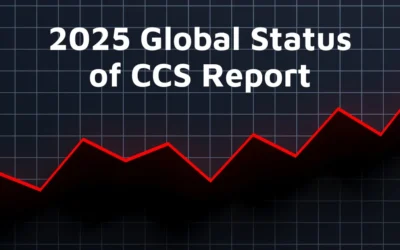As the world intensifies its efforts to combat climate change, the carbon credit market is rapidly evolving, presenting new opportunities and challenges. By 2025, the landscape of carbon credits is expected to undergo significant transformations, driven by technological advancements, regulatory changes, and shifting market dynamics. This post explores the future of carbon credits, highlighting key trends and predictions that will shape the market in the coming years.
Technological Advancements in Carbon Sequestration
1. Enhanced Direct Air Capture Technologies
Direct Air Capture (DAC) technologies are poised to become more efficient and cost-effective by 2025. Innovations in materials science and chemical engineering are expected to reduce the energy requirements and operational costs of DAC systems. Enhanced sorbents, improved capture processes, and integration with renewable energy sources will drive the scalability and adoption of DAC technologies. However, DAC remains a capital-intensive option, often requiring substantial financial investment and advanced infrastructure.
2. Dynamic’s Plant-Based Alternative
At Dynamic Carbon Credits, we offer a sustainable and cost-effective alternative to DAC. Our plant-based carbon sequestration approach leverages the natural ability of plants to capture CO2 from the atmosphere. By enhancing this process with biochar production, we provide a practical solution that not only sequesters carbon but also enriches soil health. This method is less capital-intensive and can be implemented at various scales, making it accessible and beneficial for a wide range of stakeholders.
3. Blockchain for Carbon Credit Verification
Blockchain technology is revolutionizing the carbon credit market by enhancing transparency, traceability, and security. By 2025, blockchain-based platforms will become standard for verifying and trading carbon credits. These platforms will provide immutable records of carbon credit transactions, reducing fraud and ensuring the integrity of carbon credits. This will boost investor confidence and attract more participants to the market.
4. Artificial Intelligence and Big Data Analytics
Artificial Intelligence (AI) and Big Data analytics will play a crucial role in optimizing carbon sequestration projects and carbon credit trading. AI algorithms will analyze vast amounts of data to identify the most effective carbon sequestration methods, predict market trends, and optimize trading strategies. This will lead to more efficient and profitable carbon credit markets.
Regulatory Changes and Government Policies
1. Strengthened Climate Policies and Carbon Pricing Mechanisms
Governments worldwide are expected to implement more stringent climate policies and carbon pricing mechanisms. By 2025, more countries will adopt carbon taxes or cap-and-trade systems, setting higher prices for carbon emissions. These regulatory changes will drive demand for carbon credits, as businesses seek cost-effective ways to comply with emissions regulations.
2. International Collaboration and Standardization
International collaboration on carbon markets will increase, leading to the standardization of carbon credit methodologies and verification processes. The establishment of a global carbon market framework will facilitate cross-border trading of carbon credits, enhancing market liquidity and efficiency. This will also ensure that carbon credits are consistently measured and verified, boosting their credibility.
3. Incentives for Carbon Removal Technologies
Governments will introduce incentives for carbon removal technologies, such as DAC and biochar production. Tax credits, subsidies, and grants will encourage investment in these technologies, accelerating their development and deployment. This will expand the range of carbon sequestration options available to businesses and investors.
Market Dynamics and Investment Opportunities
1. Growing Corporate Demand for Carbon Credits
Corporate demand for carbon credits will continue to grow as businesses commit to net-zero emissions targets. Companies across various sectors will invest in carbon credits to offset their emissions and enhance their sustainability profiles. This increased demand will drive the growth of the carbon credit market, creating new investment opportunities.
2. Expansion of Voluntary Carbon Markets
The voluntary carbon market will expand as more companies and individuals seek to offset their carbon footprints. By 2025, the voluntary market will play a significant role in driving carbon sequestration projects, offering a diverse range of carbon credits to meet different sustainability goals. This market growth will be supported by improved transparency and verification standards.
3. Emergence of Carbon Credit Derivatives
Financial innovations will lead to the emergence of carbon credit derivatives, such as futures and options. These financial instruments will allow investors to hedge against carbon price fluctuations and speculate on future carbon credit prices. The introduction of carbon credit derivatives will enhance market liquidity and attract more institutional investors.
The Role of Carbon Credits in Achieving Climate Goals
1. Supporting Nationally Determined Contributions (NDCs)
Carbon credits will play a vital role in helping countries achieve their Nationally Determined Contributions (NDCs) under the Paris Agreement. By 2025, more countries will leverage carbon credits to meet their emission reduction targets, integrating carbon markets into their national climate strategies. This will create a robust demand for high-quality carbon credits.
2. Enhancing Corporate ESG Performance
Environmental, Social, and Governance (ESG) performance will become increasingly important for businesses. Carbon credits will be a key component of corporate ESG strategies, enabling companies to demonstrate their commitment to sustainability. By 2025, companies with strong ESG performance will enjoy better access to capital and enhanced brand reputation.
3. Promoting Sustainable Development Goals (SDGs)
Carbon credit projects will increasingly align with the United Nations Sustainable Development Goals (SDGs). Projects that deliver co-benefits, such as biodiversity conservation, poverty alleviation, and clean energy access, will attract more investment. By 2025, the integration of SDGs into carbon credit projects will drive sustainable development and create positive social and environmental impacts.
Conclusion
The future of carbon credits is bright, with significant advancements and opportunities on the horizon. By 2025, technological innovations, regulatory changes, and evolving market dynamics will transform the carbon credit landscape, making it more efficient, transparent, and impactful. For businesses, investors, and sustainability professionals, understanding these trends and predictions is essential for leveraging carbon credits to achieve climate goals and drive sustainable growth.
Dynamic Carbon Credits is committed to staying at the forefront of these developments, offering innovative solutions and insights to help you navigate the evolving carbon credit market. Visit Dynamic Carbon Credits to learn more about our services and join us in our mission to create a sustainable future.





